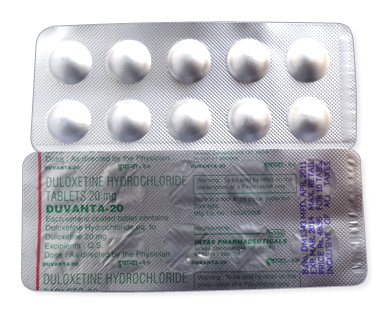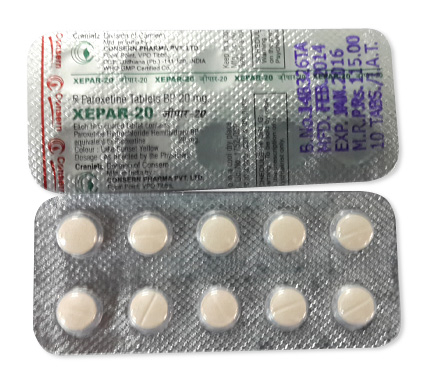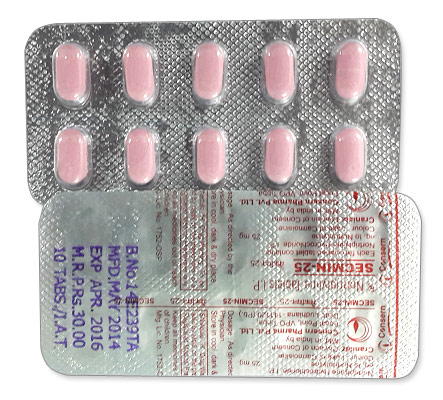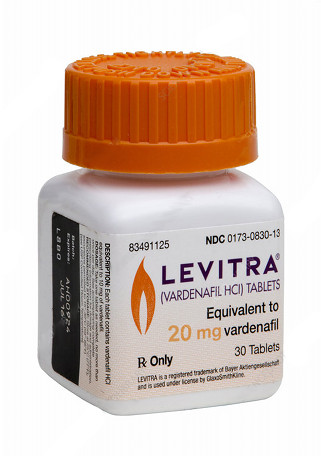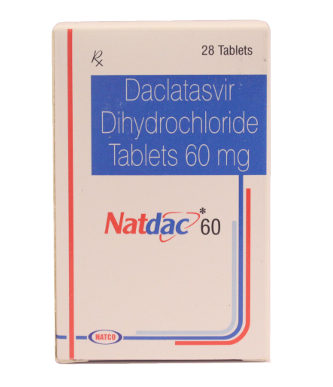
Citalopram
- At our pharmacy, Citalopram is available only with a valid prescription. We offer delivery in 5–14 days globally, with discreet packaging.
- Citalopram treats major depressive disorder, obsessive-compulsive disorder, panic disorder, and social phobia. It works by increasing serotonin levels through selective reuptake inhibition (SSRI mechanism).
- The usual dosage is 20 mg once daily, with a maximum of 40 mg daily for adults. Lower doses are advised for elderly or medically compromised patients.
- Administered orally as tablets (including film-coated), drops (10–20 mg/mL), or oral solution. Tablets should be swallowed whole.
- Therapeutic effects typically begin within 1–4 weeks of consistent daily dosing.
- Its long half-life (≈35 hours) allows for once-daily administration to maintain stable therapeutic levels.
- Avoid alcohol consumption, as it may exacerbate side effects like drowsiness and negatively affect mood stability.
- Most common side effects include nausea, dry mouth, headache, insomnia, sweating, fatigue, and tremor.
- Would you like to consult with a doctor to obtain a prescription for Citalopram?
Basic Citalopram Information
| Aspect | Details |
|---|---|
| International Nonproprietary Name (INN) | Citalopram |
| Australian Brand Names | Talohexal, Celapram |
| ATC Classification | N06AB04 (SSRI antidepressant) |
| Dosage Forms | Film-coated tablets (10mg, 20mg, 40mg) |
| Leading Manufacturers | Lundbeck, Teva, Sandoz |
| Regulatory Status | TGA-approved, Schedule 4 (Prescription only) |
| Standard Packaging | Blister packs (28-30 tablets), oral drops in bottles |
Citalopram is a widely prescribed antidepressant in Australia available under brand names like Talohexal and Celapram. As a selective serotonin reuptake inhibitor (SSRI) classified under ATC code N06AB04, it comes in film-coated tablets of 10mg, 20mg and 40mg strengths. The Therapeutic Goods Administration (TGA) strictly regulates this medication as Schedule 4, meaning you'll need a valid prescription from your doctor.
Manufactured by companies including Lundbeck, Teva and Sandoz, citalopram reaches Australian pharmacies in securely sealed blister packs containing 28-30 tablets. Oral drop formulations come in specialised bottles with dropper caps for accurate dosing. All packaging includes mandatory consumer medicine information leaflets detailing usage guidelines and safety considerations.
How Citalopram Works in Your Body
Citalopram functions by increasing serotonin availability in the brain. It specifically blocks the reabsorption (reuptake) of this neurotransmitter into nerve cells, leaving higher serotonin levels available in synaptic spaces between neurons. This serotonin boost helps regulate mood pathways, though therapeutic effects develop gradually over several weeks as neurotransmitter systems adapt.
The liver processes citalopram primarily through CYP2C19 and CYP3A4 enzymes, converting it into metabolites eventually eliminated through kidneys. With a relatively long half-life of approximately 36 hours, steady daily dosing maintains consistent blood levels. Metabolic variations mean your doctor might adjust dosages based on liver function and other health factors.
Essential Safety Considerations
Several important interaction precautions apply when taking citalopram:
- MAO inhibitors: Absolutely avoid combining with MAOIs due to life-threatening serotonin syndrome risk
- NSAIDs: Increased bleeding potential with painkillers like ibuprofen
- Alcohol: Potentially worsens drowsiness and coordination issues
- Nicotine: Accelerates medication metabolism requiring dose adjustments
- Tamoxifen: Potential interference with cancer medication effectiveness
Cardiac monitoring becomes crucial at higher dosages since exceeding 40mg daily heightens QT interval prolongation risks - an electrical disturbance that can trigger dangerous heart rhythms. Your GP may recommend periodic ECG checks if maintaining elevated doses long-term.
Recognising Potential Complications
While most people tolerate citalopram reasonably well, being aware of significant adverse reactions helps ensure prompt medical attention if needed:
- Serotonin syndrome: Watch for fever, muscle rigidity and tremors
- QT prolongation: Report dizziness or heart palpitations immediately
- Discontinuation effects: Slowly tapering reduces withdrawal symptoms
- Hyponatremia: Elderly patients should monitor sodium levels
Patients beginning citalopram therapy typically see their healthcare provider more frequently during initial weeks to monitor treatment response and manage potential side effects.
C) Indications
Citalopram is prescribed primarily for managing mental health conditions. In Australia, it's approved for major depressive disorder, where it helps restore mood balance by increasing serotonin availability. For panic disorder, it reduces both the frequency and intensity of unexpected anxiety attacks. Obsessive-compulsive disorder treatment involves easing unwanted thoughts and repetitive behaviours. Australian doctors sometimes prescribe it off-label for social phobia and PTSD symptoms, though evidence varies.
Special populations require tailored approaches. For elderly patients over 65, doctors limit doses to 20mg daily due to increased cardiac risks. During pregnancy, citalopram carries category C classification - meaning fetal risks exist from animal studies but might be acceptable if benefits outweigh dangers. Newborns may experience withdrawal symptoms like irritability if exposed near delivery. Juvenile use remains controversial under 18 years due to heightened suicide risk concerns.
D) Dosage & Administration
| Condition | Initial Dose | Maximum Dose |
|---|---|---|
| Major Depressive Disorder | 20mg daily | 40mg daily |
| Panic Disorder | 10mg daily | 40mg daily |
Dosing adjustments become necessary for certain health conditions. With liver impairment, maximal intake reduces to 20mg daily since metabolism slows significantly. Kidney dysfunction warrants cautious initiation using lower starting doses. Timing matters - consuming citalopram in mornings often suits those experiencing insomnia, while evening administration may reduce daytime drowsiness.
Managing missed doses requires practical guidelines. Patients should take it as soon as remembered unless nearing next scheduled dose. Never double doses to compensate. Store tablets below 25°C within original blister packs, maintaining foil integrity prevents moisture degradation. Discontinuation necessitates gradual reduction under medical supervision over weeks.
E) Safety & Warnings
Multiple contraindications exist for citalopram therapy. Avoid concurrent usage with MAO inhibitors due to serotonin syndrome risks requiring 14-day washout periods before switching medications. Cardiac abnormalities like QT prolongation history prohibit usage, especially above 20mg daily where arrhythmia hazards increase significantly. Documented hypersensitivity to SSRIs constitutes another absolute restriction.
Adverse reactions range from mild annoyance to severe complications:
- Frequent side effects: Nausea strikes 25-40% initially before fading
- Moderate disruptions: Sexual dysfunction persists long-term for many users
- Serious concerns: Monitor suicide ideation especially in young adults
Precautionary measures involve constant vigilance. Black box warnings mandate mood monitoring during early weeks. Electrolyte imbalances like hyponatremia commonly affect older individuals requiring sodium level checks. Liver enzyme testing periodically assesses metabolic impact. Immediately discontinue if muscle rigidity or autonomic instability suggests serotonin syndrome.
F) Patient Experience
Effectiveness outcomes vary considerably across individuals. Approximately 60-70% report mood improvements within 4-6 weeks according to MedicineInsight data. Patients describe subtle shifts in emotional resilience before notable happiness changes. Functional recovery often precedes emotional recovery in daily Australian life contexts.
Common complaints centre around lasting side effects. Sexual difficulties like diminished libido affect both genders persistently. Weight fluctuations average 2-5kg gain annually. Withdrawal symptoms emerge quickly - dizziness and electric shock sensations discourage abrupt cessation despite prescription conclusion.
Practical management tips enhance treatment experience:
- Offset nausea by taking doses alongside food
- Counteract sexual issues through timing modifications or adjunct therapies
- Prevent dizziness upon discontinuation via prolonged dose tapering
- Document mood patterns fortnightly assists consultation effectiveness reviews
Alternatives & Comparison
Australians prescribed antidepressants have several options similar to citalopram. Common alternatives include:
| Drug | Cost (AUD/month)* | Key Advantage | Limitation |
|---|---|---|---|
| Citalopram | $15–$30 | Fewer gastrointestinal issues reported | QT interval risk at higher doses |
| Escitalopram | $20–$40 | Faster onset of action for some | Higher cost than other SSRIs |
| Sertraline | $15–$25 | Lowest sexual side effects risk | More frequent dosing intervals |
| Fluoxetine | $10–$20 | Once-weekly dosing option available | Long half-life complicates switching |
*PBS-subsidised pricing for common strengths. General practitioners often start with citalopram for mild to moderate depression due to its tolerability profile. Choice depends on individual factors like:
- Previous medication responses
- Specific symptoms being treated
- Cost considerations for non-subsidised scripts
- Risk factors like cardiac history
Market Overview
Citalopram is widely available nationwide through pharmacies like Chemist Warehouse and TerryWhite Chemmart. Generic versions consistently remain in stock. Pricing varies slightly between retailers:
- Blister packs (28 tablets): $10–$20 for generic brands
- Oral drops: Approximately $25 per bottle
- Branded versions may cost 30-40% more
Most prescriptions follow Australia's standard Pharmaceutical Benefits Scheme 28-day dispensing cycle. Seasonal demand often increases during winter months when depression symptoms may worsen. All products meet Therapeutic Goods Administration quality standards.
Research & Trends
Recent clinical studies provide new insights about citalopram:
- A 2024 meta-analysis confirmed equivalent effectiveness with escitalopram for depression despite earlier claims about superior efficacy
- Ongoing research explores potential off-label uses including neuropathic pain management and post-stroke recovery
- Cardiac safety remains under review particularly around QT-prolongation risks at dosages exceeding 40mg/day
Generic versions dominate the market since Lundbeck's patent expired. This competition maintains affordable pricing. Prescribing trends show stable usage patterns with gradual shifts toward newer antidepressants like vortioxetine for treatment-resistant cases.
Guidelines for Proper Use
Follow best practices for safety and effectiveness:
- Timing: Take once daily consistently either morning or evening
- Administration: Tablets should be swallowed whole without crushing
- Compatibility: Food doesn't affect absorption take with meals if nausea occurs
Avoid combining with:
Alcohol, St John's Wort, or NSAIDs due to interaction risks. Store medication properly:
- Tablets in original packaging below 25°C
- Drops in sealed bottle away from light
Critical safeguards:
- Never stop suddenly due to withdrawal risk
- Report mood changes or suicidal thoughts immediately





